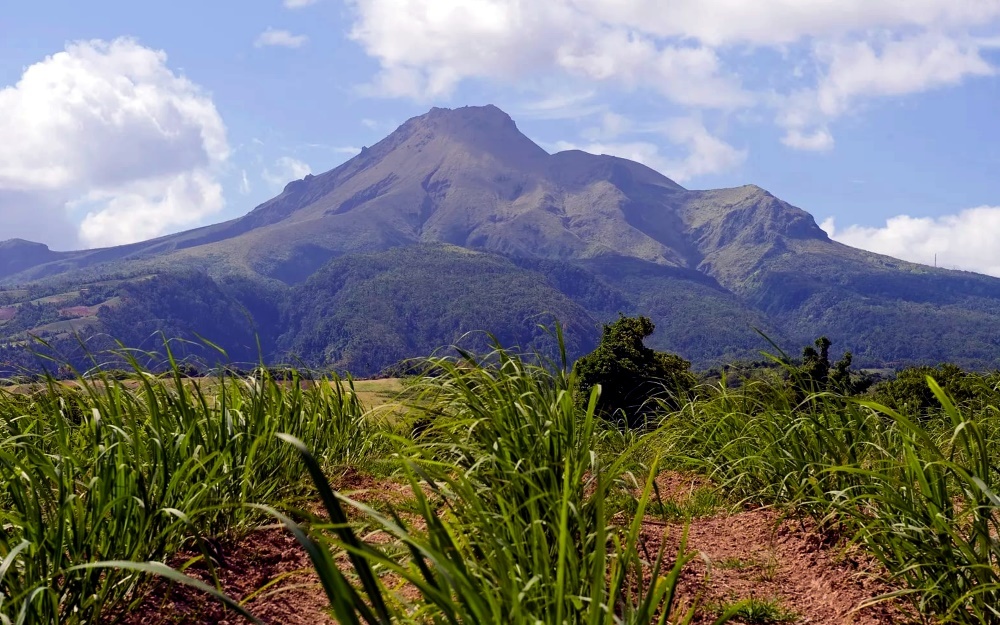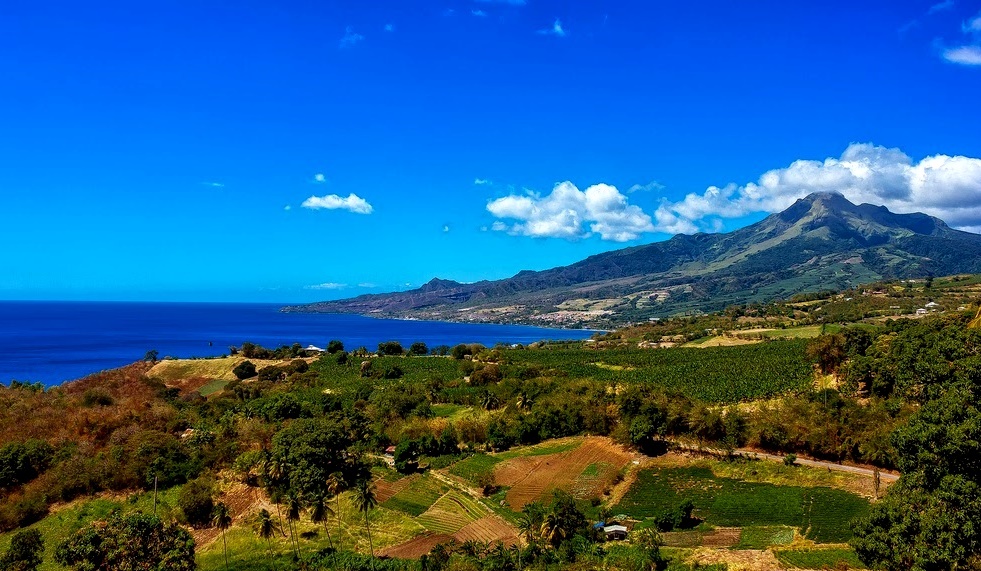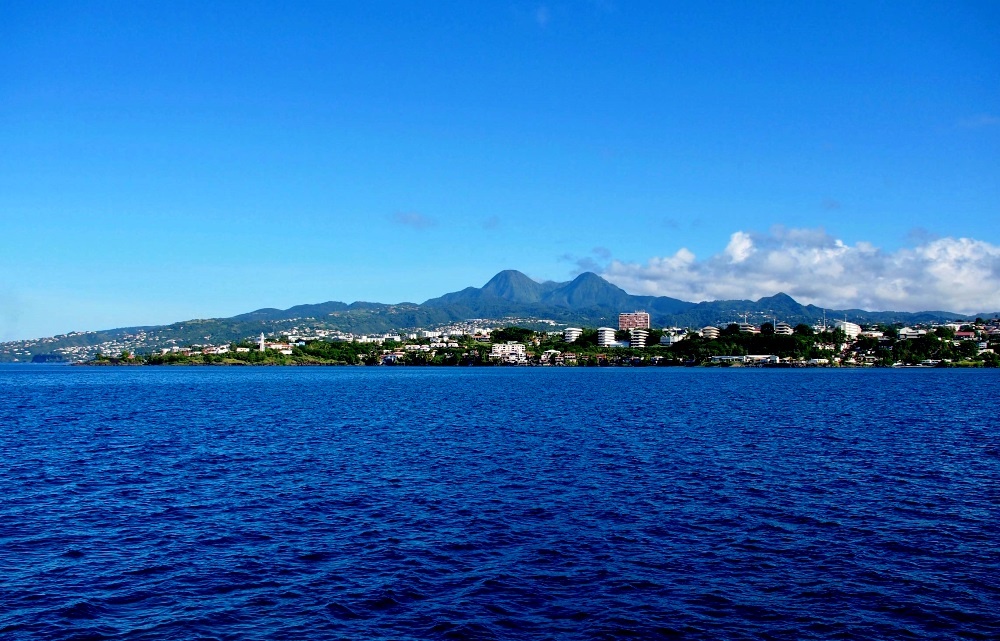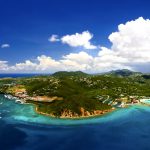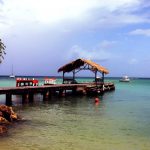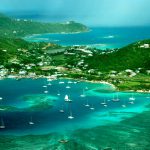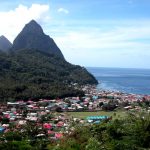In the Caribbean, in the pearl necklace of the Lesser Caribbean Islands, stretching in a picturesque arc from Haiti to the mouth of the Orinoco River and further along the Venezuelan coast of South America, there are many volcanic islands with rich nature and a favorable climate. Many convenient bays, coral reefs, bizarre rocks and dense forest cover, palm-fringed beaches with the purest sand - truly a corner of heaven on earth.
The tropical trade wind climate of the Small Caribbean Islands is a land of eternal summer with comfortable average monthly temperatures from +24 to +26 °C. The fury of the tropical sun moderates the breath of the northeastern trade winds. The only thing that occasionally disturbs the peace of this paradise is tropical hurricanes. They usually hit the islands in July - September, accompanied by curtains and multi-day downpours.
It would seem that nothing can disrupt the leisurely rhythm of life on the islands washed by the warm surf of the Caribbean Sea. However, in the depths of the islands and under the ocean floor lurks a terrible threat - it is impressively reminiscent of the cones of extinct and active volcanoes that rise on many of the Caribbean islands.
Particularly famous is the Mont Pelee volcano, located on Martinique, an island that by the end of the 19th century became the most prosperous French colony and received the nickname “Little Paris of the West Indies.” The first volcanic eruptions were recorded in 1635. Volcanic activity was then observed in 1792 and 1851, when ash, white as snow, covered the city of Saint-Pierre, located at the foot of Mont Pelée, in a thick layer. Since then, the eruptions became weaker, and for the next half century the volcano completely “slept.”
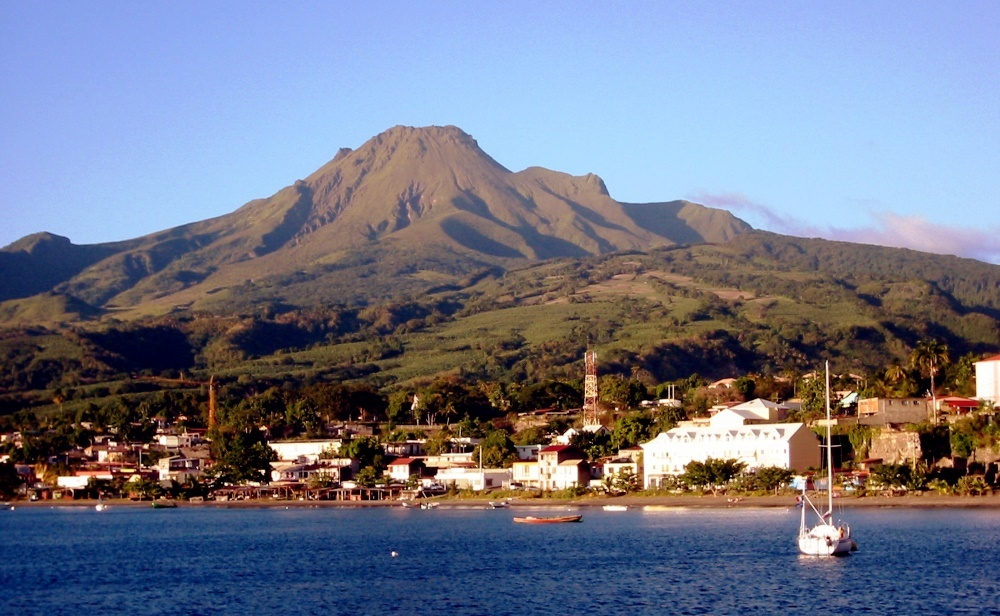
At the turn of the 19th and 20th centuries, the top and slopes of the volcano became a favorite place for Sunday walks for townspeople. However, at the beginning of May 1902, the hidden Mont Pele came to life, although no one perceived the resumption of its activity as a signal of a terrible danger threatening the city. And soon Mont Pele staged a real doomsday, consisting of several acts. Already on May 5, the first tragedy occurred: on this day, heavy rains caused the formation of a mud flow from hot ash, which swept along the slope of the Mont Pele volcano and destroyed the local sugar factory.
On the night of May 8, the force of the eruptions increased alarmingly, and in the early morning three powerful explosions were heard one after another. After that, a real nightmare began. The side of the volcano facing the city opened up like the gates of hell, a fiery cloud burst out of the depths of the mountain and rushed down the slope with a terrible roar, sweeping away everything in its path. The next attack was launched by streams of hot lava, which crawled down the slope, destroying vineyards, buildings and all living things. Horror-stricken city residents rushed to the sea, but it was too late: the Mont Pele cone burst into flames again. Two minutes later, a cloud of ash and volcanic gases, the temperature of which reached 700 °C, hit the city. The ensuing hurricane of stones and ash in a few minutes wiped out the thriving city from the face of the earth and destroyed 17 steamships in the harbor that were moored at the pier. Only one steamship, the Roddam, smoking and filled to the brim with ash, managed to escape from this hell. The water in the harbor was boiling, and all witnesses to the eruption of the Mont Pele volcano, with the exception of two people, one of whom was a prisoner imprisoned in an underground chamber, died.
The atrocities of the Mont Pele volcano were not limited to the disaster of May 8, 1902. On June 2, an even more powerful hot whirlwind swept over the ruins of Saint-Pierre. All that was left of the city were scattered stones mixed with ash and volcanic emissions. About 2 thousand more people died that day - rescuers, engineers and sailors who arrived on the island of Martinique to provide assistance to the victims.
Researchers believe that the residents of Saint-Pierre did not have a single chance to escape. The volcanic cloud that covered the city was a deadly emulsion of hot poisonous gases, steam and hot lava dust. At the crater of the volcano it had a temperature of 980 °C and moved at a speed of 500 km/h. Findings of half-melted glass bottles in the ruins shows what the temperature was in the city. Within a radius of 2 kilometers from the volcano, the entire area was literally covered with a solid mass of stones, each of which weighed up to 30 tons.
“Live seismographs” warned the inhabitants of the island of Martinique about the impending disaster. Migratory birds that had taken a fancy to the lake near Saint-Pierre suddenly left it, followed by the “city dwellers” - sparrows and crows. On the eve of the eruption, many snakes appeared in many neighborhoods of the city, which behaved unusually aggressively and attacked people and domestic animals. The reason for this behavior of the animals was most likely an increase in soil temperature and an increase in the concentration of volcanic gases in the air.
